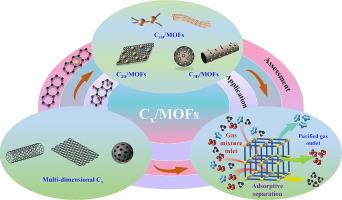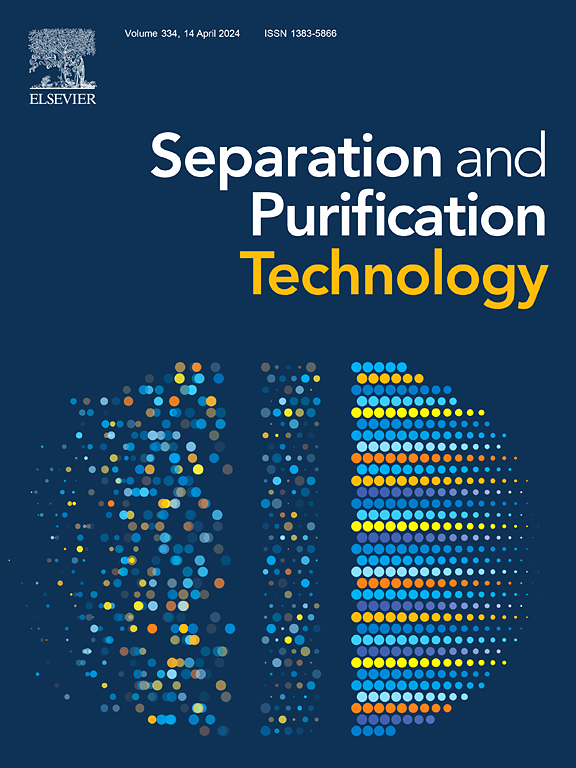Recent progress on customizable multi-dimensional carbon-supported metal–organic frameworks (Cx/MOFs) composites for efficient adsorption of gases and vapors
IF 8.1
1区 工程技术
Q1 ENGINEERING, CHEMICAL
引用次数: 0
Abstract
Metal-organic frameworks (MOFs), a novel adsorbent with ultra-high porosity, customizable pore size and chemistry, have gained wide attentions for adsorbing and separating gases and vapors. However, some parent MOFs are usually unsatisfied when facing the complex environmental conditions, such as humidity, gas/vapor mixtures. To break these dilemmas, multi-dimensional carbon, 1D carbon nanotube (CNT), 2D graphene (GR), 3D porous carbon (PC), supported MOFs composites (Cx/MOFs, x termed as the dimension of carbon) have been developed. In this review, the types and synthetic strategies of Cx/MOFs are distinguished and classified based on the dimension and function of Cx, respectively, and the assessment methods are also put forward to identify the compounds or composites. Due to the synthetic effect between Cx and MOFs, the resulted Cx/MOFs composites not only enhanced the water stability of pristine MOFs, but also regenerated additional characteristics like customized pores around interfaces, which further improved the adsorption and separation abilities for gases and vapors, such as greenhouse gases (CO2, CH4), fuel gases (CH4, H2), toxic gases and vapors (SO2, H2S, NH3 and various condensative volatile organic compounds (VOCs)). In addition, the future prospects in the fields of adsorption and separation on Cx/MOFs are emphasized and pictured.


求助全文
约1分钟内获得全文
求助全文
来源期刊

Separation and Purification Technology
工程技术-工程:化工
CiteScore
14.00
自引率
12.80%
发文量
2347
审稿时长
43 days
期刊介绍:
Separation and Purification Technology is a premier journal committed to sharing innovative methods for separation and purification in chemical and environmental engineering, encompassing both homogeneous solutions and heterogeneous mixtures. Our scope includes the separation and/or purification of liquids, vapors, and gases, as well as carbon capture and separation techniques. However, it's important to note that methods solely intended for analytical purposes are not within the scope of the journal. Additionally, disciplines such as soil science, polymer science, and metallurgy fall outside the purview of Separation and Purification Technology. Join us in advancing the field of separation and purification methods for sustainable solutions in chemical and environmental engineering.
 求助内容:
求助内容: 应助结果提醒方式:
应助结果提醒方式:


